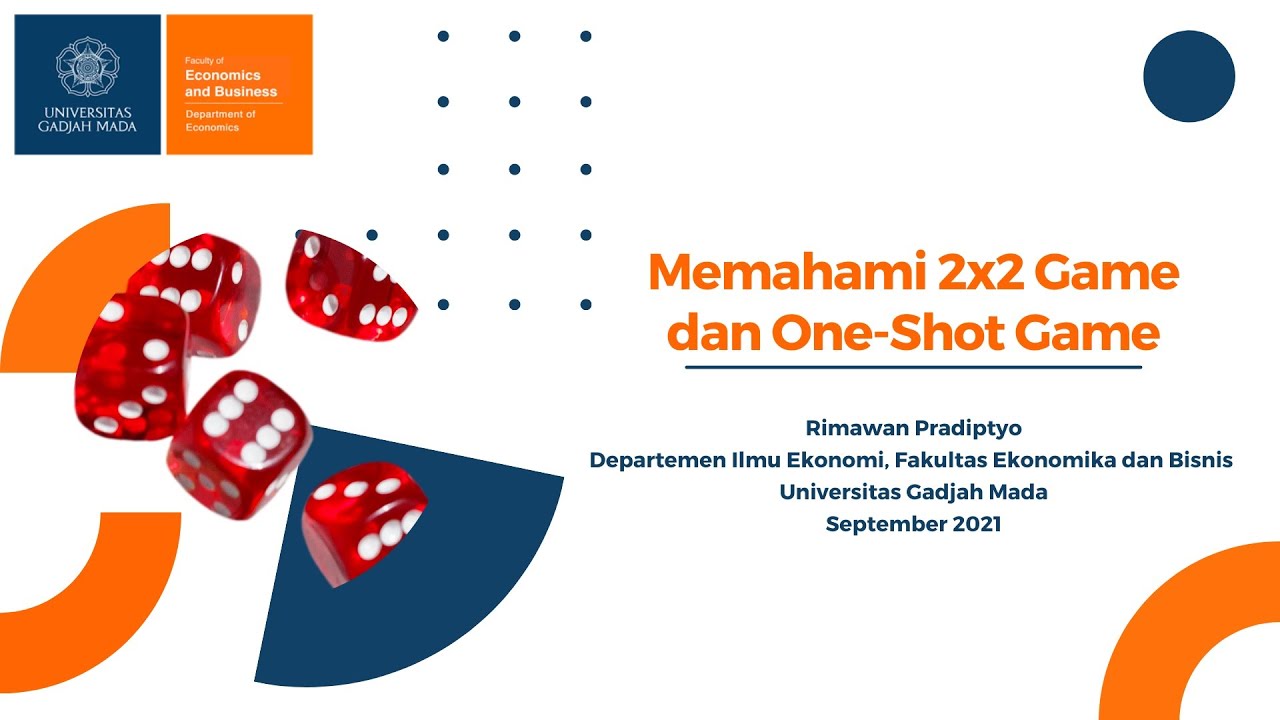(AGT4E2) [Game Theory] Cooperative versus Noncooperative Game Theory
Summary
TLDRThis episode compares and contrasts cooperative and non-cooperative game theory, explaining the differences in assumptions and approaches. In non-cooperative game theory, players cannot form binding agreements and are analyzed individually. In cooperative game theory, players can form coalitions and make binding agreements. The choice between these approaches depends on the strategic environment and the questions being addressed. While non-cooperative game theory focuses on individual strategies and outcomes, cooperative game theory looks at optimal group outcomes. The episode uses an example of three kids pooling money to buy ice cream to illustrate these concepts.
Takeaways
- 😀 Cooperative and non-cooperative game theory are both valid approaches for modeling strategic interactions, with each having its own advantages and disadvantages.
- 😀 The choice between cooperative and non-cooperative game theory depends on the context and the specific questions you are addressing.
- 😀 Non-cooperative game theory assumes players cannot make binding agreements, while cooperative game theory assumes that players can make enforceable agreements.
- 😀 In cooperative game theory, players can form coalitions to work together, whereas non-cooperative game theory focuses on individuals without formal coalitions.
- 😀 The strategic environment is treated as a 'black box' in cooperative game theory, with the focus being on the outcome, not the process.
- 😀 Non-cooperative game theory opens the 'black box' and analyzes the specific strategies, actions, and timing of the game.
- 😀 Cooperative game theory is more prescriptive, focusing on optimal outcomes, while non-cooperative game theory is more descriptive, analyzing the process and strategies behind players' actions.
- 😀 In situations where players have a history with each other or will have future interactions, cooperative game theory is more appropriate for analyzing outcomes.
- 😀 Non-cooperative game theory is useful for understanding the detailed dynamics of how players make decisions, such as pricing or quantity determination in firms.
- 😀 The distinction between cooperative and non-cooperative game theory isn't always clear-cut; sometimes both approaches can be applied to the same environment depending on the question at hand.
Q & A
What is the main message of this episode?
-The main message is that both cooperative and non-cooperative game theory are valid approaches for analyzing strategic interactions. The choice between the two depends on the environment and the specific questions being addressed.
How does cooperative game theory differ from non-cooperative game theory?
-Cooperative game theory assumes that players can form binding agreements and work together in coalitions, while non-cooperative game theory assumes players act independently without the possibility of forming binding agreements.
Can you provide an example that illustrates both game theories?
-Yes, the example given is three kids pooling their money to buy ice cream. In a non-cooperative game, each player would decide independently how to share the ice cream. In a cooperative game, the players could form a coalition, pooling their money and negotiating how to divide the ice cream.
What does the term 'binding agreement' mean in this context?
-A binding agreement refers to an arrangement that players make where they agree to certain terms, and there are consequences (monetary or emotional) if any player violates the agreement.
When is cooperative game theory more suitable than non-cooperative game theory?
-Cooperative game theory is more suitable when players have a history together, are familiar with each other, and will interact in the future. It is also used when the primary focus is on the outcome of the game rather than the individual strategies.
What role do coalitions play in cooperative game theory?
-In cooperative game theory, players form coalitions, or groups, and the game is modeled as a competition between these coalitions rather than focusing on individual players.
Why does non-cooperative game theory focus on individual decisions?
-Non-cooperative game theory focuses on individual decisions because it assumes players act independently and without the ability to form binding agreements, meaning each player's strategy is influenced by their own actions and the actions of others.
What is the key difference between prescriptive and descriptive approaches in game theory?
-Cooperative game theory is more prescriptive, as it focuses on suggesting optimal outcomes, while non-cooperative game theory is descriptive, focusing on explaining how players actually behave and make decisions in a given game.
When is non-cooperative game theory more appropriate?
-Non-cooperative game theory is more appropriate when the focus is on understanding the detailed dynamics of decision-making, strategy, and timing in a game, such as when analyzing how firms compete in the market.
Can both cooperative and non-cooperative game theory be used to model the same strategic environment?
-Yes, both cooperative and non-cooperative game theory can model the same strategic environment, but the choice depends on the specific questions being addressed, such as focusing on the process or the outcome.
Outlines

Cette section est réservée aux utilisateurs payants. Améliorez votre compte pour accéder à cette section.
Améliorer maintenantMindmap

Cette section est réservée aux utilisateurs payants. Améliorez votre compte pour accéder à cette section.
Améliorer maintenantKeywords

Cette section est réservée aux utilisateurs payants. Améliorez votre compte pour accéder à cette section.
Améliorer maintenantHighlights

Cette section est réservée aux utilisateurs payants. Améliorez votre compte pour accéder à cette section.
Améliorer maintenantTranscripts

Cette section est réservée aux utilisateurs payants. Améliorez votre compte pour accéder à cette section.
Améliorer maintenant5.0 / 5 (0 votes)






